Abstract
Two experiments examined the relation between response variability and sensitivity to changes in reinforcement contingencies. In Experiment 1, two groups of college students were provided complete instructions regarding a button-pressing task; the instructions stated “press the button 40 times for each point” (exchangeable for money). Two additional groups received incomplete instructions that omitted the pattern of responding required for reinforcement under the same schedule. Sensitivity was tested in one completely instructed and one incompletely instructed group after responding had met a stability criterion, and for the remaining two groups after a short exposure to the original schedule. The three groups of subjects whose responding was completely instructed or who had met the stability criterion showed little variability at the moment of change in the reinforcement schedule. The responding of these three groups also was insensitive to the contingency change. Incompletely instructed short-exposure responding was more variable at the moment of schedule change and was sensitive to the new contingency in four of six cases. In Experiment 2, completely and incompletely instructed responding first met a stability criterion. This was followed by a test that showed no sensitivity to a contingency change. A strategic instruction was then presented that stated variable responding would work best. Five of 6 subjects showed increased variability after this instruction, and all 6 showed sensitivity to contingency change. The findings are discussed from a selectionist perspective that describes response acquisition as a process of variation, selection, and maintenance. From this perspective, sensitivity to contingency changes is described as a function of variables that produce response variability.
Keywords: rule-governed behavior, contingency-shaped behavior, response variability, selectionism, button press, college students
Full text
PDF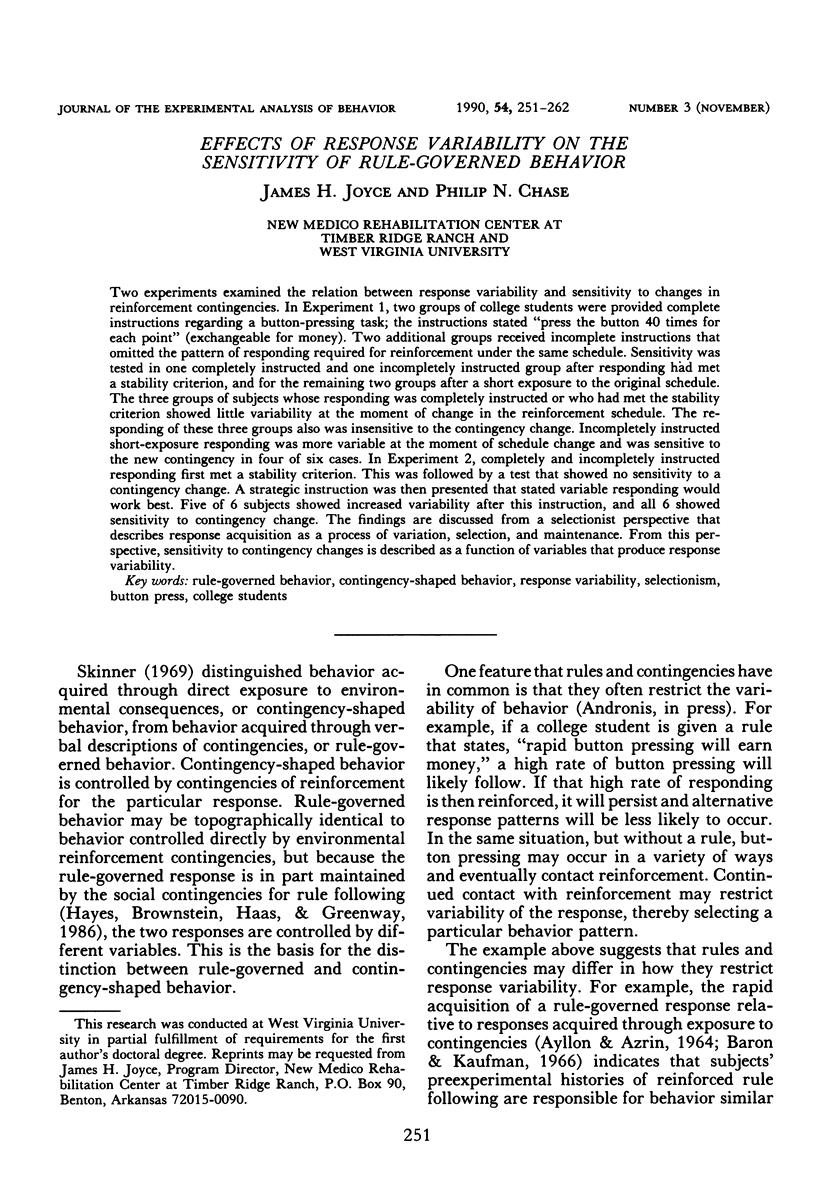
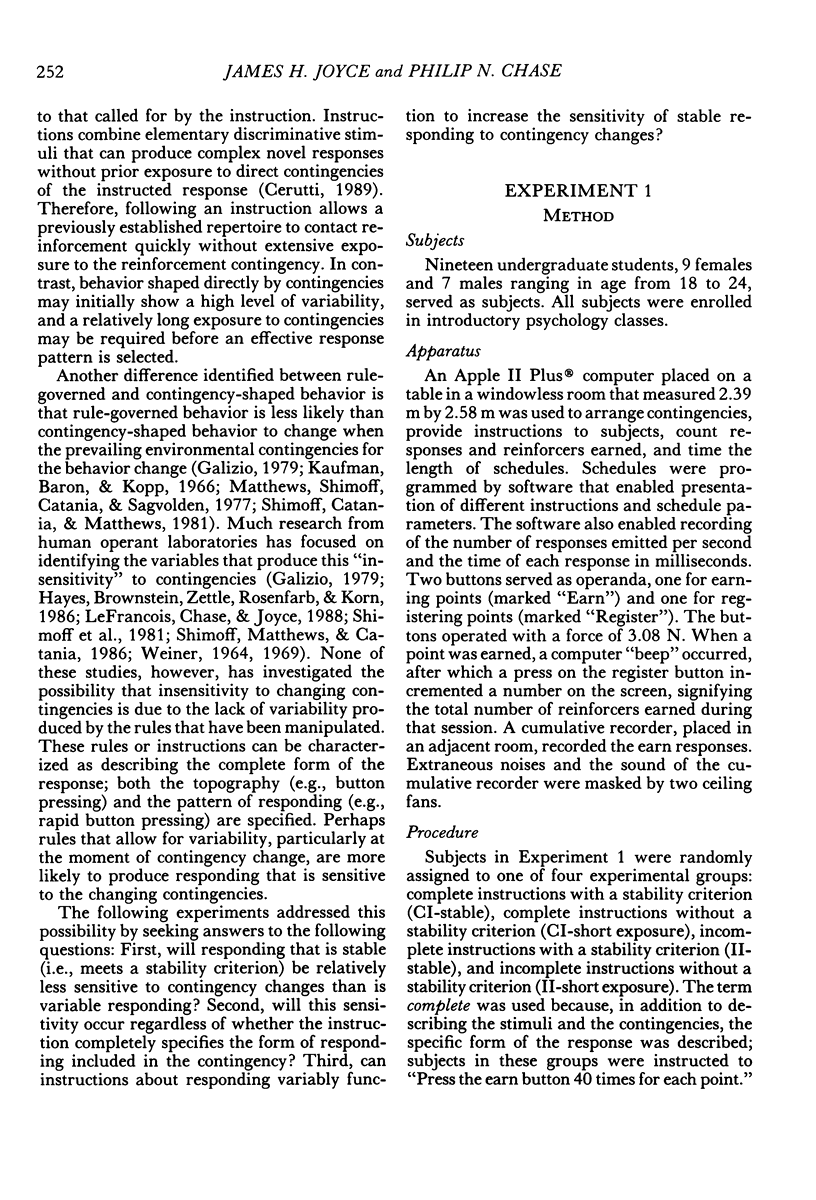
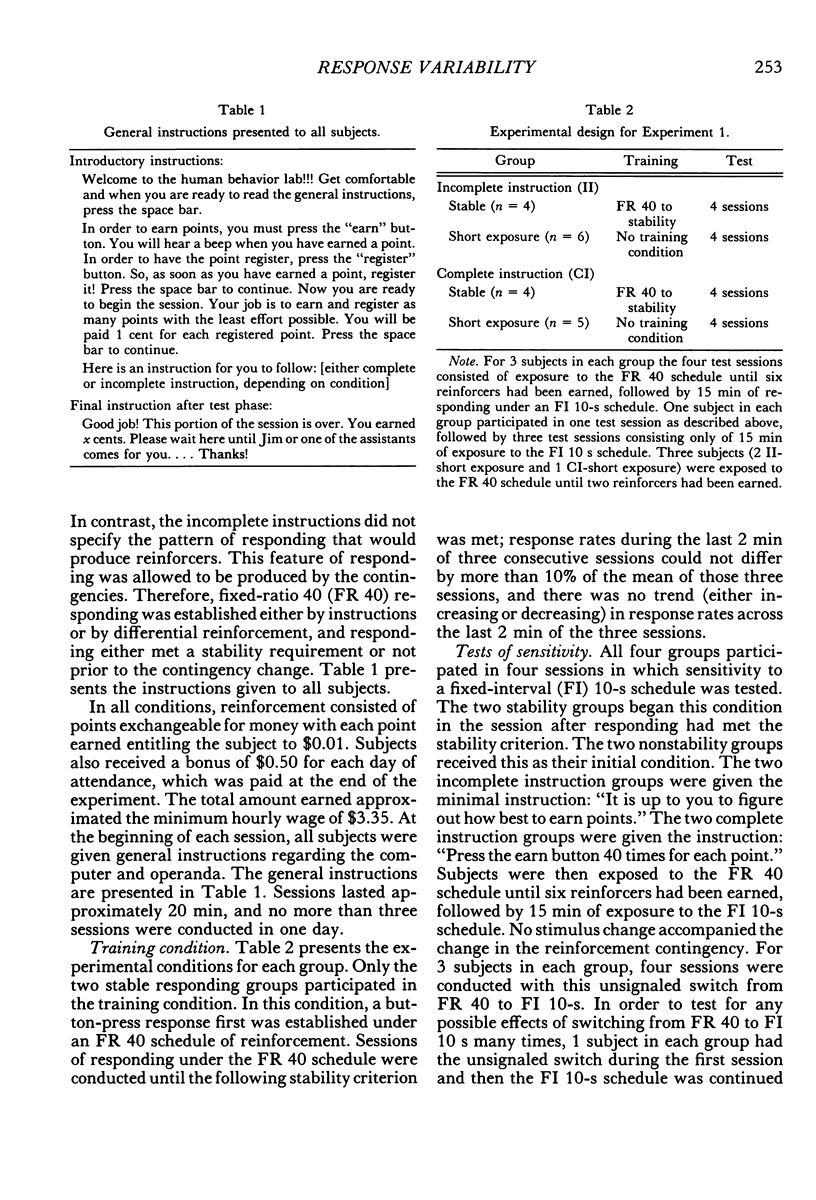
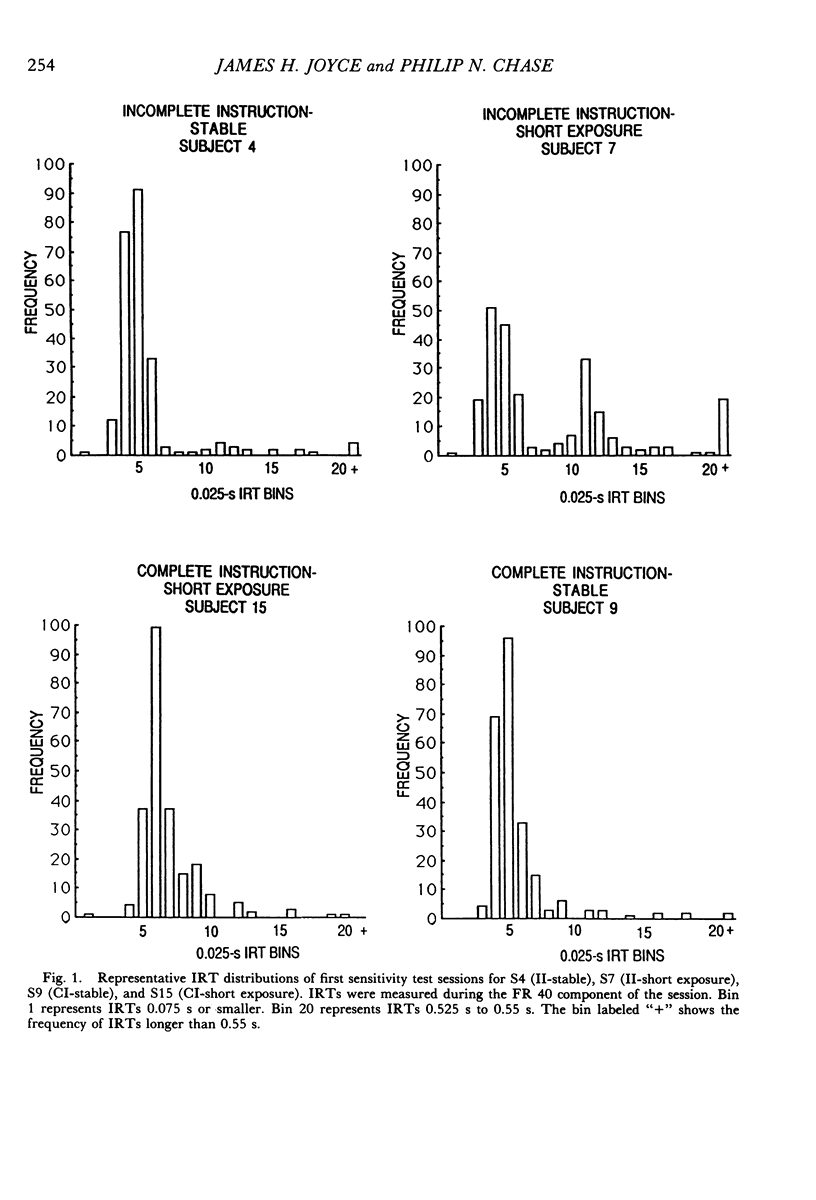
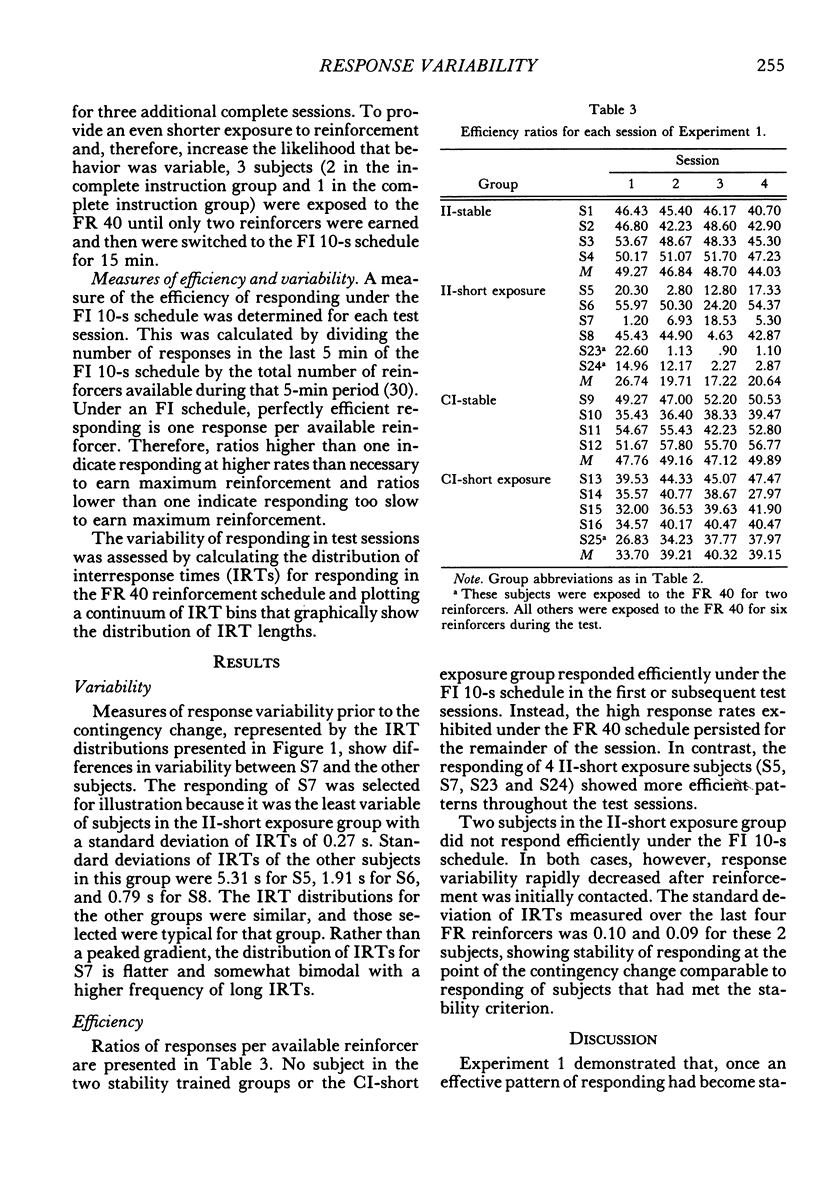
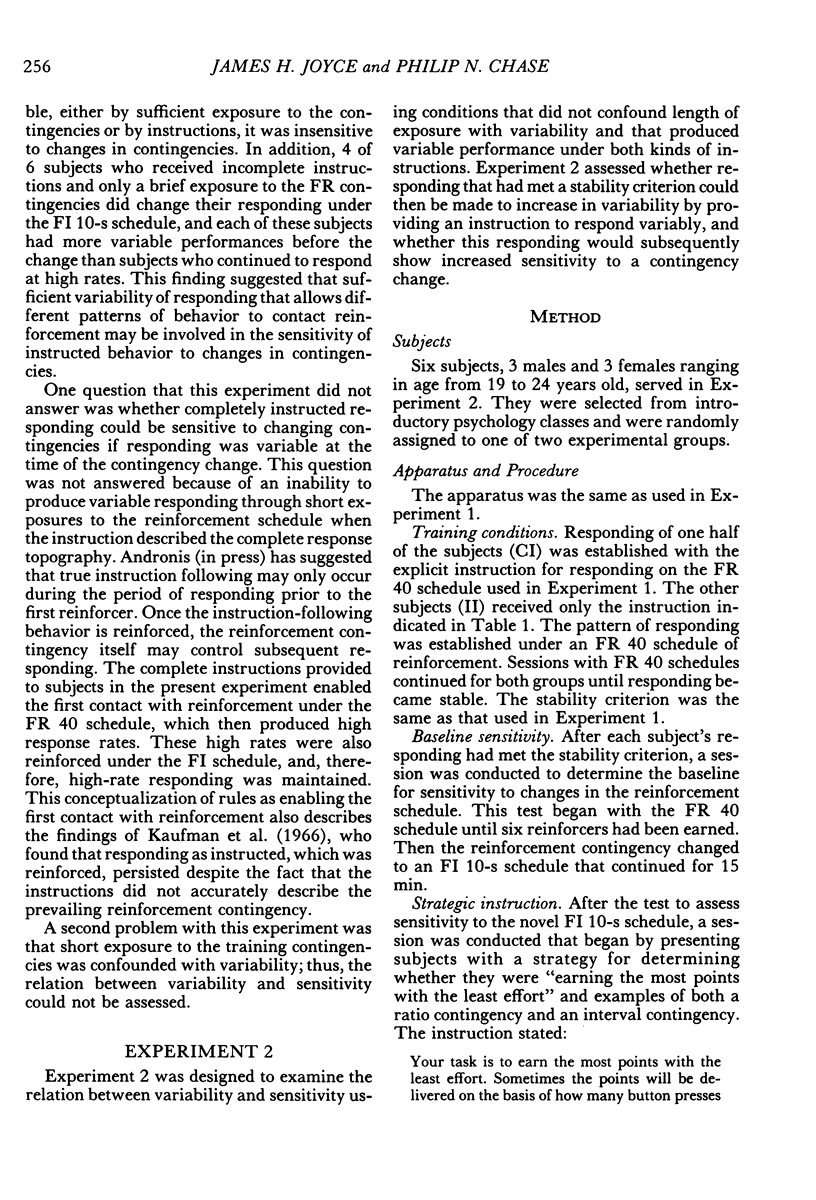
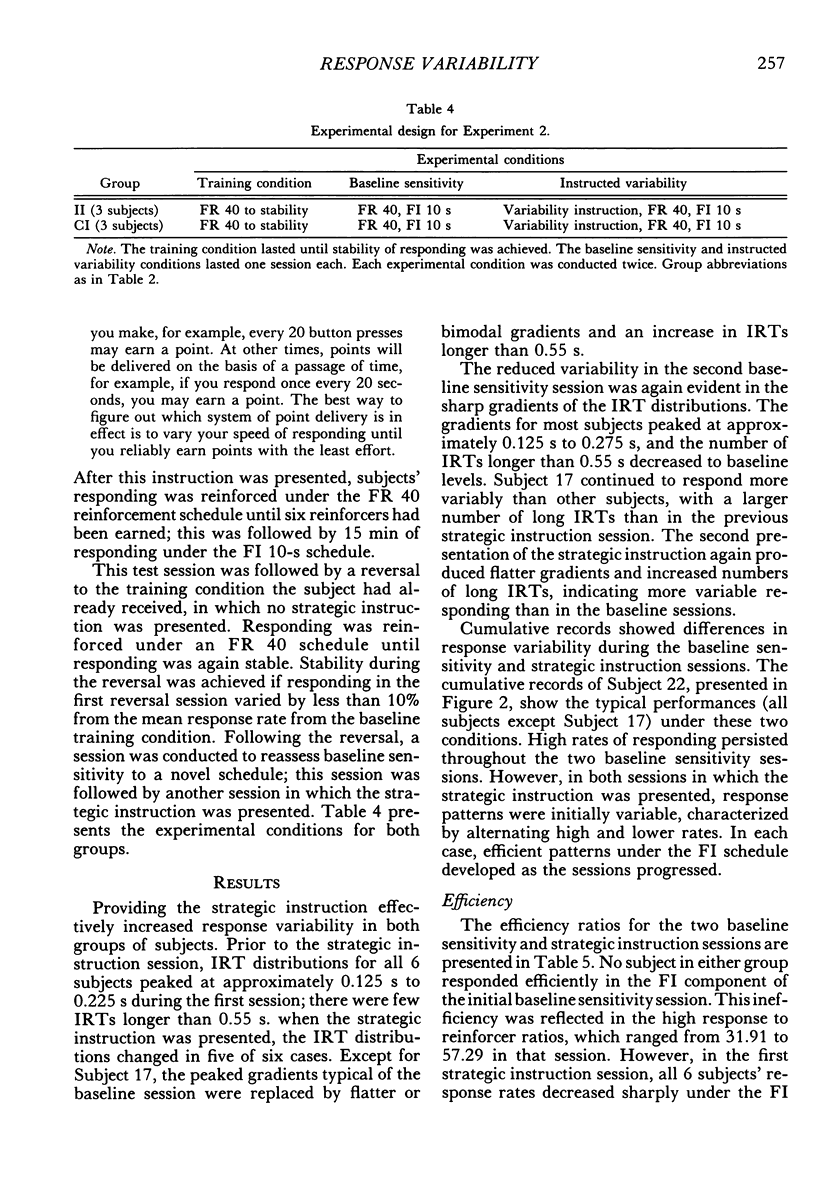

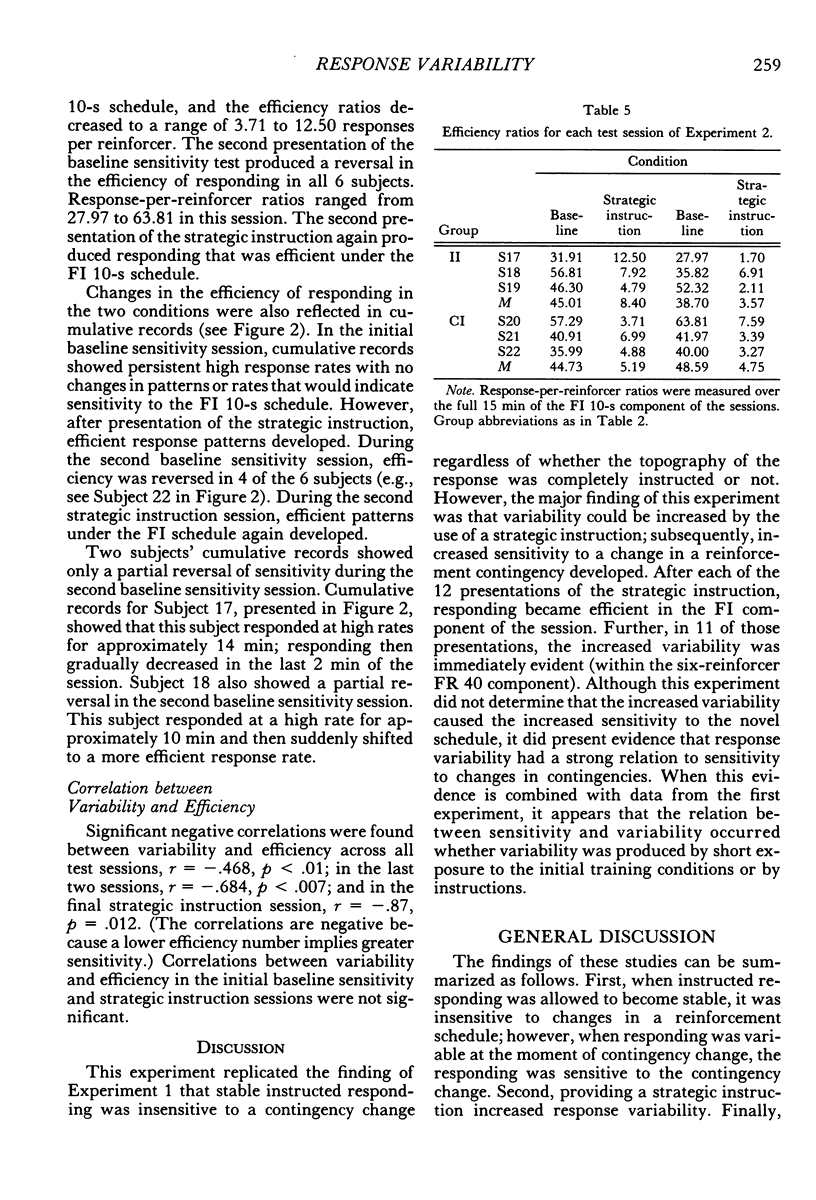
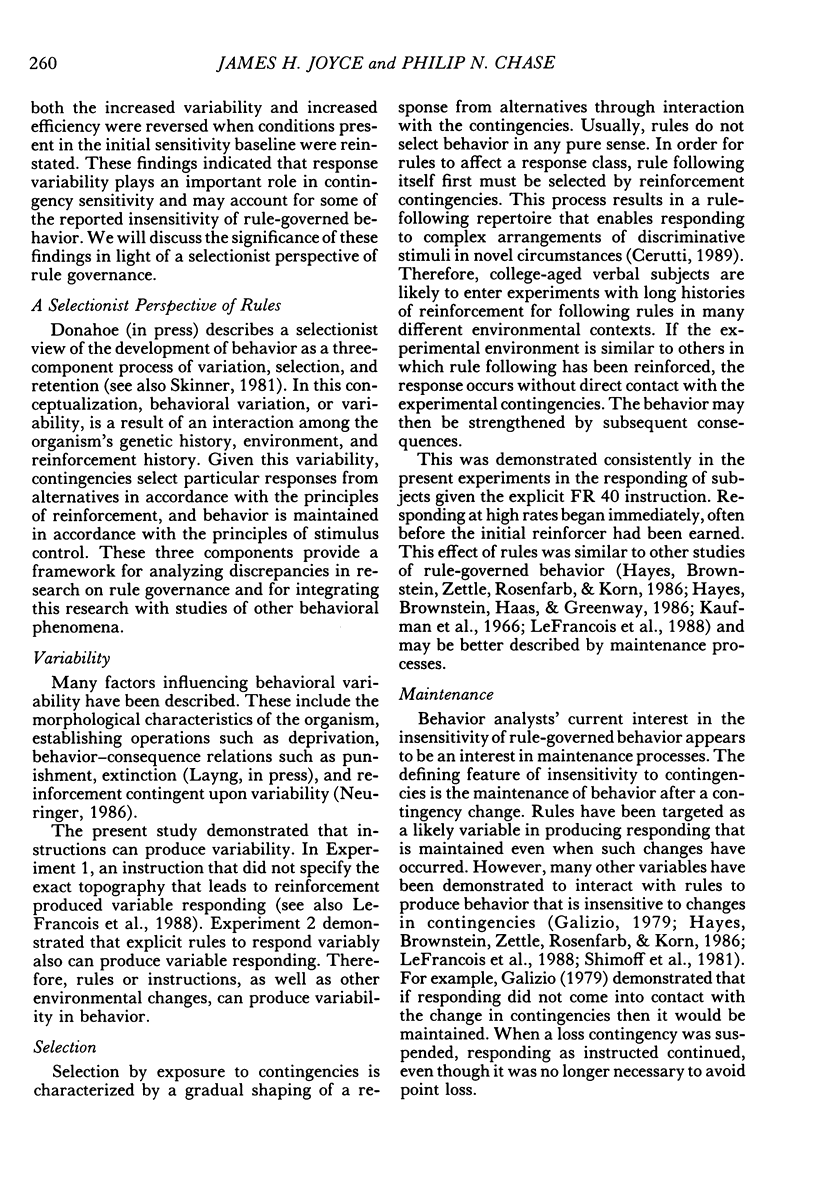
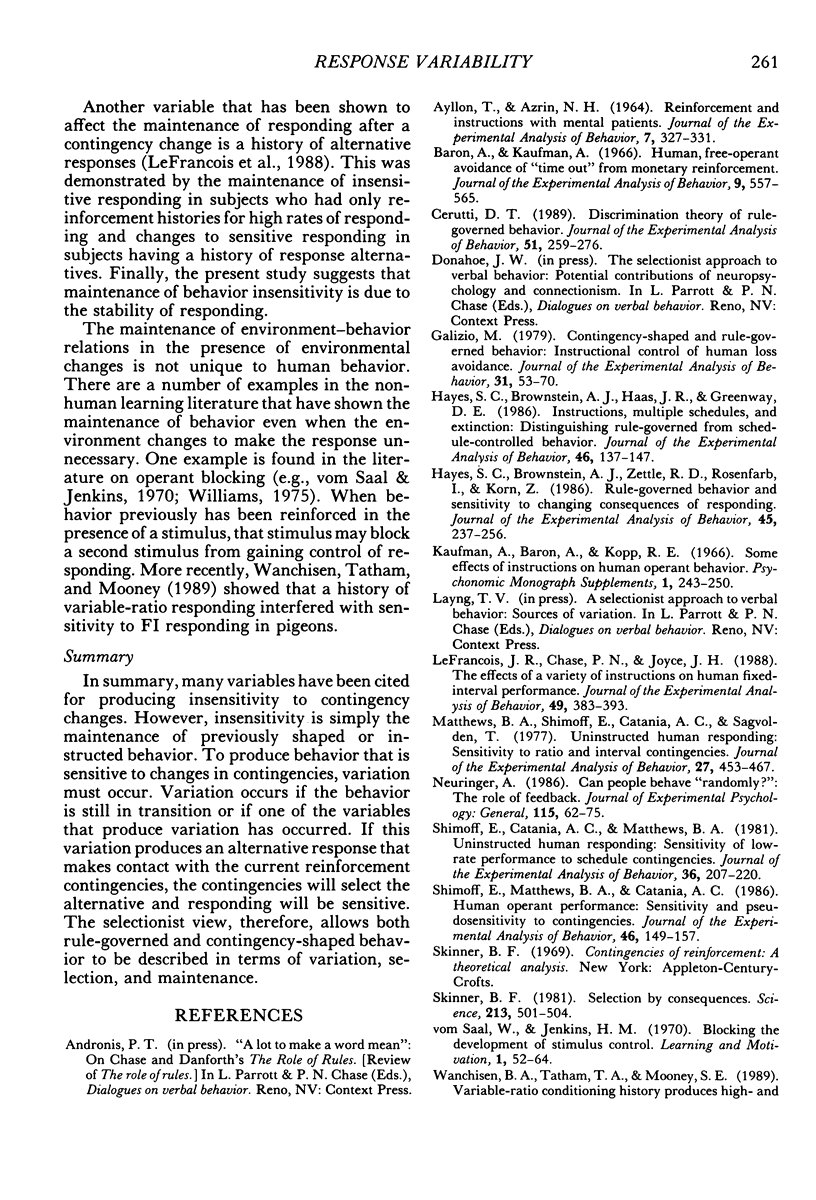
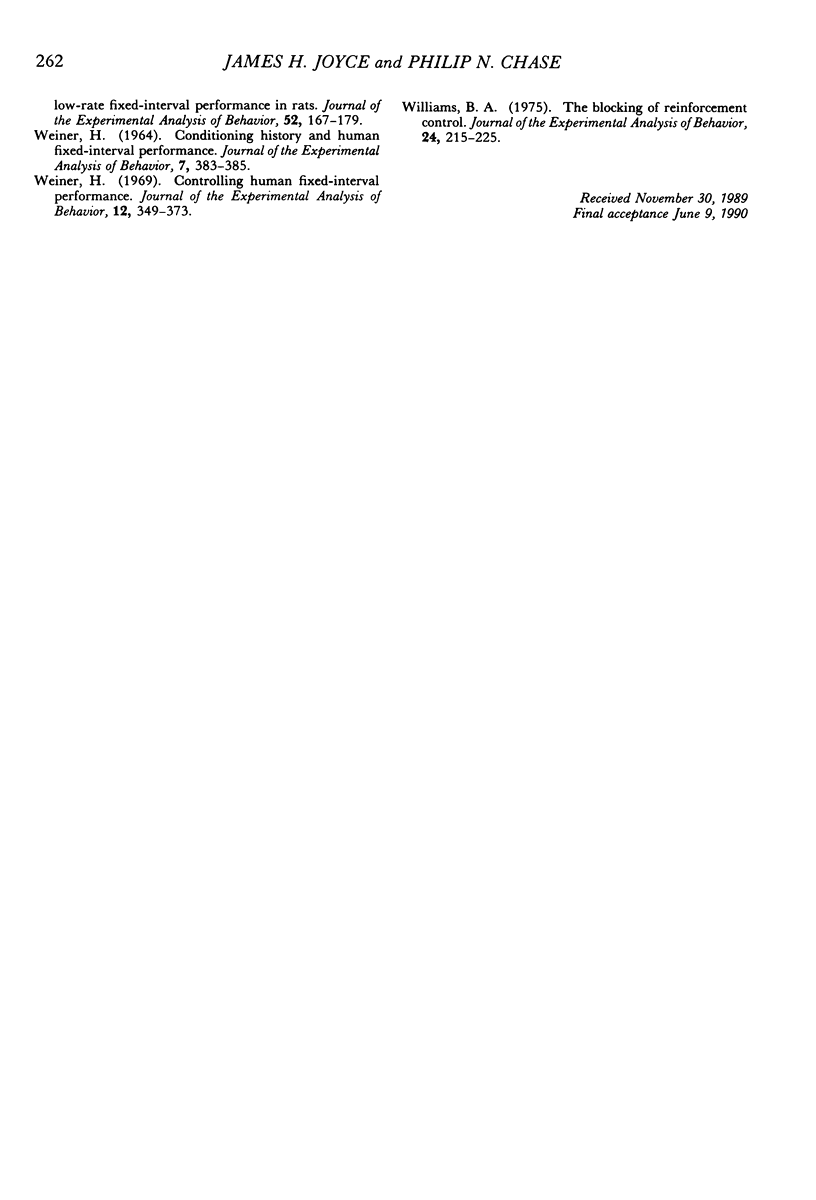
Selected References
These references are in PubMed. This may not be the complete list of references from this article.
- AYLLON T., AZRIN N. H. REINFORCEMENT AND INSTRUCTIONS WITH MENTAL PATIENTS. J Exp Anal Behav. 1964 Jul;7:327–331. doi: 10.1901/jeab.1964.7-327. [DOI] [PMC free article] [PubMed] [Google Scholar]
- Baron A., Kaufman A. Human, free-operant avoidance of "time out" from monetary reinforcement. J Exp Anal Behav. 1966 Sep;9(5):557–565. doi: 10.1901/jeab.1966.9-557. [DOI] [PMC free article] [PubMed] [Google Scholar]
- Cerutti D. T. Discrimination theory of rule-governed behavior. J Exp Anal Behav. 1989 Mar;51(2):259–276. doi: 10.1901/jeab.1989.51-259. [DOI] [PMC free article] [PubMed] [Google Scholar]
- Galizio M. Contingency-shaped and rule-governed behavior: instructional control of human loss avoidance. J Exp Anal Behav. 1979 Jan;31(1):53–70. doi: 10.1901/jeab.1979.31-53. [DOI] [PMC free article] [PubMed] [Google Scholar]
- Hayes S. C., Brownstein A. J., Haas J. R., Greenway D. E. Instructions, multiple schedules, and extinction: Distinguishing rule-governed from schedule-controlled behavior. J Exp Anal Behav. 1986 Sep;46(2):137–147. doi: 10.1901/jeab.1986.46-137. [DOI] [PMC free article] [PubMed] [Google Scholar]
- Hayes S. C., Brownstein A. J., Zettle R. D., Rosenfarb I., Korn Z. Rule-governed behavior and sensitivity to changing consequences of responding. J Exp Anal Behav. 1986 May;45(3):237–256. doi: 10.1901/jeab.1986.45-237. [DOI] [PMC free article] [PubMed] [Google Scholar]
- Lefrancois J. R., Chase P. N., Joyce J. H. The effects of a variety of instructions on human fixed-interval performance. J Exp Anal Behav. 1988 May;49(3):383–393. doi: 10.1901/jeab.1988.49-383. [DOI] [PMC free article] [PubMed] [Google Scholar]
- Matthews B. A., Shimoff E., Catania A. C., Sagvolden T. Uninstructed human responding: sensitivity to ratio and interval contingencies. J Exp Anal Behav. 1977 May;27(3):453–467. doi: 10.1901/jeab.1977.27-453. [DOI] [PMC free article] [PubMed] [Google Scholar]
- Shimoff E., Catania A. C., Matthews B. A. Uninstructed human responding: Sensitivity of low-rate performance to schedule contingencies. J Exp Anal Behav. 1981 Sep;36(2):207–220. doi: 10.1901/jeab.1981.36-207. [DOI] [PMC free article] [PubMed] [Google Scholar]
- Shimoff E., Matthews B. A., Catania A. C. Human operant performance: Sensitivity and pseudosensitivity to contingencies. J Exp Anal Behav. 1986 Sep;46(2):149–157. doi: 10.1901/jeab.1986.46-149. [DOI] [PMC free article] [PubMed] [Google Scholar]
- Skinner B. F. Selection by consequences. Science. 1981 Jul 31;213(4507):501–504. doi: 10.1126/science.7244649. [DOI] [PubMed] [Google Scholar]
- WEINER H. CONDITIONING HISTORY AND HUMAN FIXED-INTERVAL PERFORMANCE. J Exp Anal Behav. 1964 Sep;7:383–385. doi: 10.1901/jeab.1964.7-383. [DOI] [PMC free article] [PubMed] [Google Scholar]
- Wanchisen B. A., Tatham T. A., Mooney S. E. Variable-ratio conditioning history produces high- and low-rate fixed-interval performance in rats. J Exp Anal Behav. 1989 Sep;52(2):167–179. doi: 10.1901/jeab.1989.52-167. [DOI] [PMC free article] [PubMed] [Google Scholar]
- Weiner H. Controlling human fixed-interval performance. J Exp Anal Behav. 1969 May;12(3):349–373. doi: 10.1901/jeab.1969.12-349. [DOI] [PMC free article] [PubMed] [Google Scholar]
- Williams B. A. The blocking of reinforcement control. J Exp Anal Behav. 1975 Sep;24(2):215–225. doi: 10.1901/jeab.1975.24-215. [DOI] [PMC free article] [PubMed] [Google Scholar]


